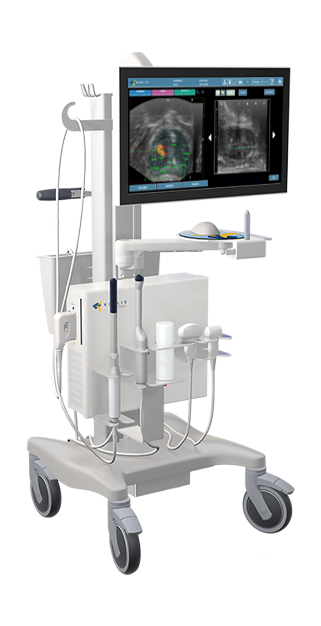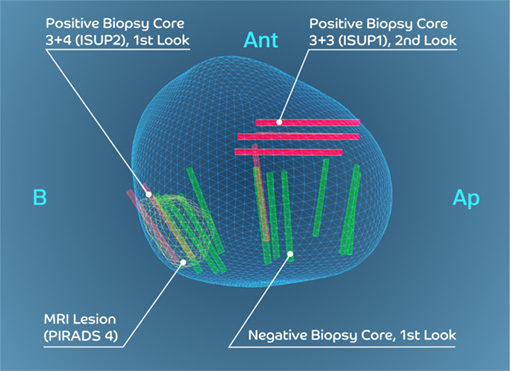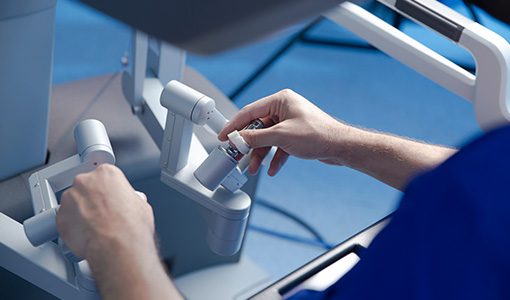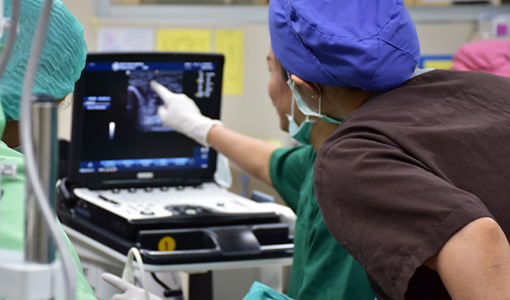Welcome to KOELIS®
Please choose a country or region.
-
US -
Global
A prostate biopsy is the only medical procedure with which prostate cancer can be diagnosed conclusively. It is performed by a urologist or radiologist when one or more anomalies have been detected in the prostate through a digital rectal exam, PSA test or, more recently, an MRI scan.
During the biopsy, small samples of prostate tissue are removed for analysis and to establish the presence or absence of cancer, its aggressiveness and respective sizes. An accurate diagnosis helps to better identify the type of cancer treatment required, without overtreating you.


The technology behind KOELIS Trinity® prostate fusion biopsy has been validated in 80+ clinical publications and utilized in 350,000+ biopsy procedures to date. More than 300 hospitals routinely use the KOELIS Trinity® system.2 MRI/ultrasound fusion biopsy helps physicians:
There are a number of options available globally for treating urologic and/or prostate cancer patients. KOELIS develops effective solutions for treating, from performing in-office routine scans to prostate cancer diagnosis using our highly accurate MRI/ultrasound fusion biopsy system.
Active surveillance involves monitoring cancer progression over time through repeated testing, including PSA testing, MRI, digital rectal examination (DRE) and biopsy. Active surveillance is an option for low-risk prostate cancer.
With the KOELIS Trinity® 3D MRI/ultrasound fusion system and 2nd Look, all previous biopsy examinations are stored for future reference and tests (not only those for active surveillance). A 3D model of the prostate is generated specifically for each patient for your physician to review at any time.


A radical prostatectomy is generally used for cancers with intermediate to high risk of progression. The entire prostate is removed surgically. Robotic surgery has been found to reduce post-operative pain and bleeding, however, the side effects remain similar to those of traditional surgery.
A radiation oncologist can treat intermediate to high-risk cancers using external radiotherapy. The number of treatment sessions varies depending on your doctor’s treatment plan and the hospital. Brachytherapy is another treatment option used by urologists and radiation oncologists for internal radiotherapy. Brachytherapy and radiation may be combined in some cases.


Advanced prostate cancer may be treated with chemotherapy to limit its progression. Oncologists may elect to use chemotherapy alongside other treatments with a goal of destroying the tumor.
Newer techniques are being investigated to complement the existing range of prostate cancer treatment options. These procedures can either be whole-gland, i.e., the entire prostate can be treated, or subtotal (hemi-gland, or focal ablation).
The advantages of a subtotal ablation are that only the cancerous area of the prostate can be treated, leaving the healthy part untreated, thus better preserving urinary and erectile functions. However, subtotal or focal ablation is still undergoing clinical review.
Cryotherapy is designed to kill cancer cells by freezing them. Cryoablation needles are inserted into the prostate, producing cold that destroys cancer cells while minimizing the impact on surrounding tissue and organs. Cryotherapy can be used for intermediate risk of prostate cancer progression and as a possible alternative to surgery (whole-gland cryotherapy). Cryotherapy is typically performed under general anesthesia on an outpatient basis. Focal cryotherapy is limited to well-selected patients.


HIFU treatment uses high-intensity focused ultrasound to heat and kill cells at a temperature greater than 60°C. A dedicated ultrasound probe is inserted into the patient’s rectum, and the ultrasound emitted by this probe is focused on various areas of the prostate. As a result, there is a local increase in temperature, killing the cells. This process is repeated at multiple angles and depths to produce an ablation covering the cancer area.
References:
1. Mean precision was 2.3 mm (95% confidence interval: 1.8 mm, 3.3 mm). Positive cores were closer to the center than were negative cores (dCC: 1.7 mm vs 3.1 mm, respectively; P = .025) https://pubmed.ncbi.nlm.nih.gov/29361246/ Precision Matters in MR Imaging-targeted Prostate Biopsies: Evidence from a Prospective Study of Cognitive and Elastic Fusion Registration Transrectal Biopsies François Cornud , Mathieu Roumiguié, Nicolas Barry de Longchamps , Guillaume Ploussard , Eric Bruguière , Daniel Portalez, Bernard Malavaud
2. KOELIS® technology is validated by more than 80 publications. Over 350,000 men have received a better standard of prostate diagnosis thanks to leading physicians at more than 300 hospitals who routinely use our technologies.
© 2024 KOELIS®. All rights reserved. KOELIS Trinity® is a registered trademark of KOELIS® in certain countries.


Request a live demo today